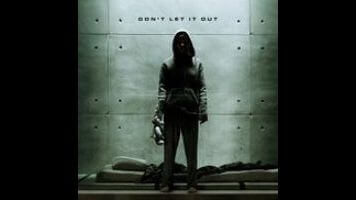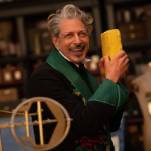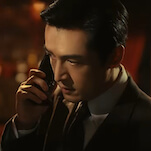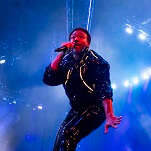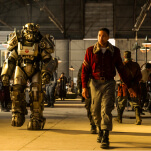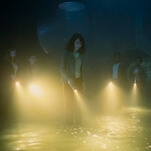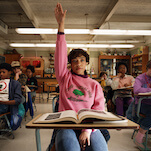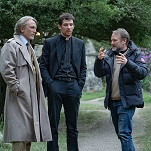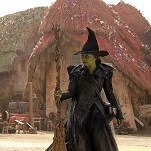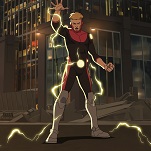Lee Weathers (Kate Mara) is in corporate risk assessment, which does not fully explain why she’s driving out to the middle of nowhere to evaluate a top-secret science project. But she should realize when she passes through a forest that closely resembles the one where many of 20th Century Fox’s genre movies take place (usually Canada; this time, Ireland) that the scientists of Morgan are up to no good. Then again, the scientists don’t seem to realize it either. The group, led by Dr. Lui Cheng (Michelle Yeoh) and Dr. Simon Ziegler (Toby Jones), speaks protectively of its subject, Morgan (Anya Taylor-Joy), everyone reminding themselves to use the pronoun “it” rather than “her.”
Morgan is designated an “it” because she was created in a lab. She is technically 5 years old, but looks about 17, complete with the practical special effects that are Taylor-Joy’s gigantic, piercing, alien-looking eyes (recently put to strong use in The Witch). A recent manifestation of Morgan’s physical power necessitates further psychological testing, as well as Lee’s “risk assessment,” to determine whether she is a viable project. Mara, with her short hair swooped back behind her ears, looks more sci-fi-friendly than the scientists, with their flannel, beards, and, in one case, gunky teeth. Her character also talks with a stilted formality, but she shares that trait with at least a few other employees of her unnamed company.
The structure of this organization makes very little sense. Their genetic engineering experiments are conducted in what looks like an abandoned version of Charles Xavier’s mansion, with plenty of extraneous team members (including, somewhat improbably, a friendly staff chef). There’s seemingly little oversight, and security doesn’t match the enormity of the project. To further evaluate Morgan, the company brings in Dr. Alan Shapiro (Paul Giamatti) to prod her with questions as the rest of the team watches from behind glass. Taylor-Joy’s big scene opposite Giamatti generates plenty of tension—stylistically and thematically, it’s a centerpiece of the film—but the motivations behind it don’t stand up to scrutiny. The doctor is clearly attempting to upset Morgan to test her behavior and her resolve, a tactic that makes sense unless she fails that test—in which case Shapiro’s tactics come across as suicidal.
What makes the scene work in the moment, though, is the slow-building reptilian hostility of Giamatti’s performance, braced up against Taylor-Joy’s attempts to stay placid and give the right answer. Her desire to please her human handlers and her short temper are a sly reflection of her true age, generating empathy even as she gets scarier. (Imagine a hyper-intelligent and freakishly strong kindergartner.) Morgan isn’t the only one who fills Lee and the audience with unease. The movie assembles a lot of prickly characters, arranges them behind glass like a poor man’s Ex Machina, and doesn’t allow any of them to perform untainted acts of heroism. Though there are bursts of violence aplenty, the most thrilling thing about Morgan is its lack of a clear rooting interest.
The director, Luke Scott (son of Ridley), doesn’t exactly elevate this material, but he does see it through. The voice of Brian Cox goads the action into Bourne territory to counter its Ex Machina overtones, but the movie works best when it riffs away from its antecedents into even more pitiless territory. Morgan boils down to the sight of two monotone, indomitable women in uniforms of sorts—Morgan’s fuzzy gray hoodie and beat-up converse; Lee’s dress shirt and high heels—squaring off, sometimes separated by glass, sometimes not. It would be a stretch to call the movie any kind of feminist statement, but it does boast an equal-opportunity nastiness alongside its enjoyable stupidities. In a movie like this, sometimes efficiency makes more sense than logic.
